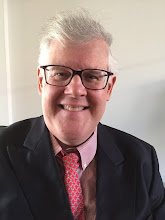Helmut Kohl—Architect of German Unity
Thirty years ago this week in 1987, President Ronald Reagan visiting Berlin, made his famous challenge, “Mr. Gorbachev, Tear Down This Wall.” Alongside the American President stood German Chancellor Helmut Kohl.
A few years earlier I met Helmut Kohl campaigning in his native Rheinland. Kohl, a towering but slightly awkward provincial politician, was often described to Americans as an amicable Gerry Ford type-character, evoking our own president of a decade earlier. It was not totally a compliment. Yet through perseverance and fate, this man from a small Western German city became a statesman on the world stage not just because of German unity, but because that singular achievement came about in peace, liberty and freedom. Kohl has died at the age of 87.
His formal election as Chancellor came in early March 1983. I vividly recall watching the fog lift over the river Rhine in the great Cathedral city of Cologne that Sunday election morning. By evening in Bonn the capital, I witnessed the landslide of his Christian Democrats (CDU/CSU) and the Free Democrats (FDP) which ushered in the opening act of the Helmut Kohl era. His political tenure would continue through sixteen years.
Kohl was deeply committed to the Atlantic Alliance. Yet standing shoulder to shoulder with the USA in NATO in the early 1980’s was not as popular as it was assumed either inside Germany or on the American Left where a loud minority “Peace movement” created an atmosphere where many people viewed the U.S. as looking to start a nuclear war. Kohl stood fast against left wing political theatrics.
Though the summer and fall of 1989 saw political rumblings in the Soviet Empire in Hungary and Poland, even otherwise hardline East Germany witnessed large and vocal demonstrations against the ruling communist regime.
Yet it was in Berlin where the anvil of freedom would strike against the Soviet Imperium. The Joshua trumpet which sounded in 9 November 1989 heralded the historic events which would release a tsunami of liberty sweeping across Central Europe. By the end of 1989, it had torn through the old Iron Curtain and had shed the bright light of freedom.
But contrary to the accepted narrative, the fall of the Berlin Wall did not see the immediate demise of the “German Democratic Republic” whose Stasi and Soviet enforcers did not disappear with the November mist. Kohl advanced a democratic ten-point plan for reunification. Ambitious and costly yes, but one which would integrate 17 million East Germans as equals.
Kohn’s miscalculation was that he said basically the old East Germany would need a fresh coat of paint and before long the landscape would be blooming. But decades of socialist mismanagement and repression had created a deeper challenge. Over the past quarter century since, the cost of reunification has been over a trillion dollars in massive infrastructural and social benefit transfers.
Chancellor Kohl was the architect of German unity on 3 October 1990, but the supporting cast included statesman and women who allowed it to happen. George H.W. Bush, Francois Mitterrand. Margaret Thatcher and Russia’s Mikhail Gorbachev. In other words, the allies of WWII, who had defeated the Nazi regime in 1945, had to legally sign off on the occupation and allow the reunification of both West and East Germany. The Cold War had ended.
Here at the UN, reunification meant that the two German delegations awarded membership in 1973 representing two separate states, namely the Federal Republic of Germany and the German Democratic Republic, would merge into one representing a united German nation.
After reunification Kohl kept close links with the USA and especially stressed the importance of Transatlantic ties through NATO. Within Europe Kohl was close to French President Francois Mitterrand and is well remembered for a moving and mournful ceremony in Verdun, the killing field of the First World War.
He was especially committed to Germany’s European identity within the emerging economic and political power of the European Union (EU). His protege Angela Merkel became Chancellor in 2005.
Helmut Kohl’s bold decisiveness and political vision helped achieve both German and indeed European unity. These extraordinary events, now a generation ago, were underscored by former President George H. W. Bush who called Kohl “One of the greatest leaders in post-war Europe.”
